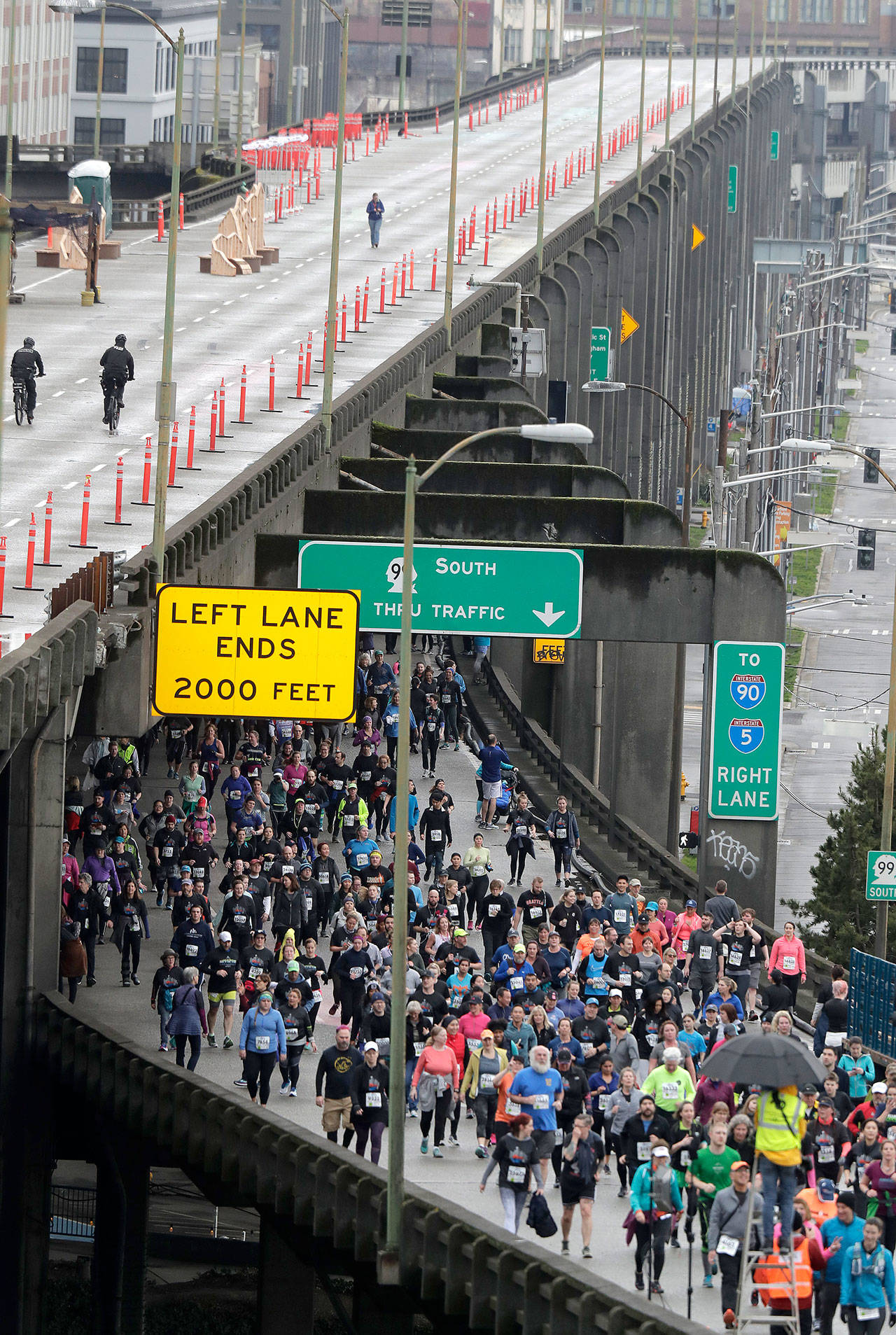By Lornet Turnbull / The Washington Post
SEATTLE — Years after the highway teardown movement helped reshape places like Boston and Seoul, this Pacific Northwest city is in the midst of a similar transformation.
On Monday, the nation’s first double-decker highway tunnel will open here, reaching more than 200 feet at its lowest point below the city’s congested streets.
The two-mile deep-bore tunnel is replacing the Alaskan Way Viaduct, an unsightly, earthquake-damaged elevated highway that runs along the city’s picturesque waterfront.
Leaders and planners had long derided the hulking concrete eyesore that separates popular waterfront attractions such as the Seattle Aquarium and Washington State Ferries from iconic landmarks, including Pike Place Market and the Seattle Art Museum.
Now the viaduct’s celebrated replacement, 18 years after the Nisqually earthquake nearly brought it down, is expected not only to reorient the city’s expanding skyline, but finally merge its downtown with its tourist-heavy waterfront.
Eight acres of new public parks, with a landscaped promenade and space for cycling and recreation, will emerge along 26 blocks from what is now the highway’s shadows.
“When we started studying options for the viaduct replacement … we looked at the Embarcadero in San Francisco and understood what a great benefit opening up the waterfront to the public and having better access was going to be,” said Paula J. Hammond, senior vice president at WSP USA, a multinational engineering and design firm.
Hammond spent 35 years with the Washington State Department of Transportation (WSDOT) and was transportation secretary during the early years of planning for the viaduct replacement. “I think in the end, it will be just like in Boston, where visitors and residents walk along the Greenway and no one remembers all the haggling that went on,” Hammond said. “They love that corridor, and they love the parks and the open space, and think it was smartest thing Boston ever did.”
The new Highway 99 tunnel stretches from the industrial tangle south of downtown, near one of the West Coast’s biggest seaports and two major stadiums, north to where the late Microsoft co-founder and philanthropist Paul Allen over the past decade transformed a sleepy neighborhood into a vibrant commercial and residential corridor, now anchored by Amazon. It is the longest road tunnel in the contiguous United States, with the second-widest diameter in the world — the widest being in Shanghai. The tunnel will carry traffic along two lanes in each direction on two levels, with a posted speed limit of 45 mph.
The $3.3 billion viaduct replacement is among a number of big-ticket transportation projects that will shift the way people and freight move around the region.
Other projects include the extension of the region’s light-rail system north of Seattle and east across the I-90 floating bridge, to connect to the suburbs across Lake Washington.
Washington state permanently closed the viaduct Jan. 11, sending 90,000 vehicles a day scrambling for alternative routes.
Built during the freeway construction frenzy of the 1950s as one of two north-south corridors through Seattle, the viaduct is part of Highway 99, a patchwork of surface streets, freeway segments and the 3,000-foot Battery Street tunnel.
Homeless residents in tents and sleeping bags find shelter in its gritty underbelly, between the six-story concrete columns and parking lots.
Mehran Sepehr, a business consultant who used to take the viaduct to his downtown offices multiple days a week, said he will miss the view it afforded from the top — the downtown skyline to the east and the expanse of Puget Sound to the west and the Olympic Mountains beyond.
“I think for Seattle to be a truly great city, the viaduct had to come down,” said Sepehr, who moved to Seattle in 2001, the year the Nisqually earthquake hit. “This city’s relationship with the water is one of its defining characteristics, and removing that artificial barrier between downtown and the waterfront will open up a whole new avenue for this city.”
Among those like him who used to drive nervously across the viaduct’s weathered frame, residents living within earshot of its unrelenting din and confused visitors negotiating its Gotham City-like underside, there are few tears being shed over the viaduct’s demise.
Yet deciding how to replace the downtown highway embroiled this city in more than a decade of political drama, countless citizen forums and stakeholder groups, three advisory ballot measures and an embarrassing two-year stall by a storied tunnel-drilling machine called Bertha. Throughout the process, every mayor and mayoral candidate in Seattle staked out a position on replacing the viaduct and about 90 replacement proposals were put forth before then-Gov. Christine Gregoire put an end to it in 2009, announcing that the tunnel would be her pick. By then, the state had spent more than $325 million.
“This is not just about replacing a road,” Gregoire said at a January 2009 news conference. “This is about building a 21st century city.”
Talk to us
> Give us your news tips.
> Send us a letter to the editor.
> More Herald contact information.

























